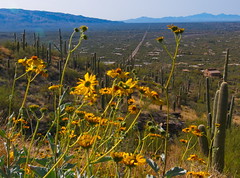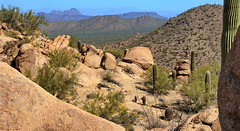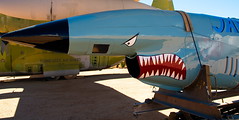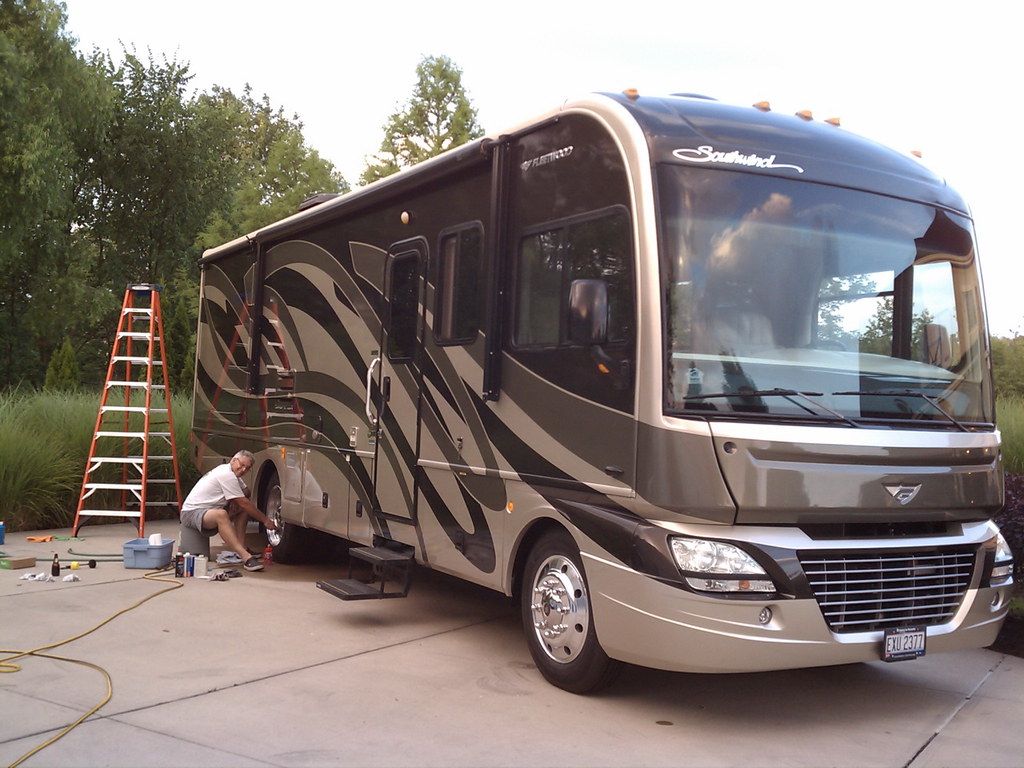 2013 dawns on an RV packed with 250 canvases, gobs of camera equipment, and a few computers as we embark on a nine-month journey through the USA and Canada. “That’s a long time,” you say. “How the heck did you come up with that plan???”
2013 dawns on an RV packed with 250 canvases, gobs of camera equipment, and a few computers as we embark on a nine-month journey through the USA and Canada. “That’s a long time,” you say. “How the heck did you come up with that plan???”
Last winter in Tucson, our Habitat friends Terry & Sue asked us about island hopping with our RV through the Inside Passage in 2009 on the Alaskan Marine Highway ferries. We happily related the stories, and darn if we didn’t get so excited that we not only talked them into going this year, but we convinced ourselves to join them!
Susi also registered for the Second Annual Plein Air Convention that will be held in Monterey California in early April, so that seemed like the logical place to begin our Alaskan adventure. We’ve heard many rave reviews of the beautiful coastline of California, Oregon and Washington, and this would give us a chance to see it for ourselves.
Then, in early October, our plans to lead a Habitat trip to Nicaragua fell through, leaving January and February wide open. “Soooo….,” Susi asked sheepishly, “isn’t Tucson on the way to California? Wouldn’t it be wonderful to re-connect with our friends at Rincon West RV Park and Habitat Tucson?” Thus came the crazy plan to drive to Tucson in January, fly home in March to do taxes, visit with family & friends, and finish some studio pieces, and then fly back to Tucson in early April so we can pick up the RV and head to Monterey.
Today, as we begin the first leg of our journey in our RV on the way to Tucson, we look forward to working a bit with Habitat for Humanity, making paintings and photographs in the desert, and re-connecting with the new friends we’ve met in the past few years. Yesterday we shoveled away winter’s first snow storm and packed the rig with the clothing we’ll need from Arizona’s deserts to Alaska’s mountains. We’ve hugged family, friends and neighbors goodbye, but we hope to stay connected with all of you via cell phone, Skype, email, and our blogs throughout the year.

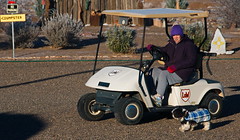 The 11° temperature one recent morning in Deming New Mexico tested everyone’s fortitude as the southwest experienced their toughest cold snap in years. Looking to capture a few shots of hoarfrost on the foliage at sunrise, I was treated to this roadrunner sunning behind our RV, and to a woman walking her dog in a golf cart. Seems the cold was keeping both of them from moving very fast!
The 11° temperature one recent morning in Deming New Mexico tested everyone’s fortitude as the southwest experienced their toughest cold snap in years. Looking to capture a few shots of hoarfrost on the foliage at sunrise, I was treated to this roadrunner sunning behind our RV, and to a woman walking her dog in a golf cart. Seems the cold was keeping both of them from moving very fast! 2013 dawns on an RV packed with 250 canvases, gobs of camera equipment, and a few computers as we embark on a nine-month journey through the USA and Canada. “That’s a long time,” you say. “How the heck did you come up with that plan???”
2013 dawns on an RV packed with 250 canvases, gobs of camera equipment, and a few computers as we embark on a nine-month journey through the USA and Canada. “That’s a long time,” you say. “How the heck did you come up with that plan???”

 Jon Carroll, a San Francisco Chronicle columnist, expresses so well — if a bit cynically — some of my fears about mixing religion and government. Please read his March 1, 2012 column
Jon Carroll, a San Francisco Chronicle columnist, expresses so well — if a bit cynically — some of my fears about mixing religion and government. Please read his March 1, 2012 column 